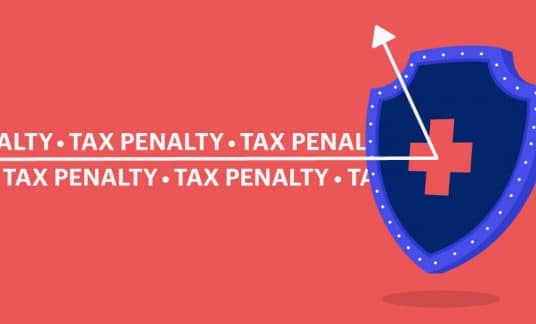A full-time equivalent (FTE) calculation is a method of converting hours worked by part-time employees into an equivalent number of full-time employees.
Discerning the number of full-time equivalent employees helps business managers make accurate budgets and forecasts for workforce power, measure worker productivity, prepare certain business metrics to gauge company performance and determine compliance with labor laws.
We’ll go through “What does FTE stand for in business?” You’ll also learn how to calculate FTE and how it affects your Affordable Care Act (ACA) compliance and Paycheck Protection Program (PPP) funding.
What Is FTE?
FTE converts the hours worked by part-time employees into the equivalent number of full-time employees.
FTE is considered to be 2,080 hours (8 hours a day, 5 days a week) on an annual basis. However, this figure doesn’t consider paid time off deductions for vacation, jury duty, sick time or holidays. If these deductions are considered in the calculations, FTE could be 1,680 hours a year.
The base number of hours depends on each company’s policies and benefits.
When Is a Job Part-Time?
The answer isn’t quite so simple because the specific number of hours a week that defines a part-time job doesn’t exist. It varies between industries, size of companies and regions.
Even government agencies don’t have a common set of rules for determining the hours for part-time jobs:
- The U.S. Department of Labor itself doesn’t define the meaning of full-time work, leaving it up to the employer to set that number.
- The U.S. Bureau of Labor Statistics defines part-time employees as anyone who works 34 hours or less per week. Anything exceeding 34 hours is considered full-time.
- While the Fair Labor Standards Act doesn’t define full-time or part-time hours, it does say that any employee who works more than 40 hours per day is considered as working overtime and must be paid at a time-and-a-half wage rate.
Each employer can decide the number of hours and which jobs will be classified as part-time positions. One employer might use 35 hours a week as the threshold, while another company would define anything less than 35 hours a week as part-time.
FTE Exceptions
Some workers aren’t considered employees and aren’t included in calculations for FTE. They include
- Interns don’t count unless they’re being paid.
- Freelance contractors aren’t employees and aren’t included.
- Seasonal workers, such as retail clerks working during the holiday season, aren’t considered unless they work for the company at other times during the year.
- Owners, spouses and business partners aren’t counted.
What Is the Purpose of FTE?
FTE conversions are crucial for preparing budgets, making labor estimates and evaluating employee productivity. Moreover, they are necessary for the consistency of business performance metrics, especially when comparing a company to industry statistics.
Determine Workloads
Companies use FTEs to determine workloads for their employees. Using the FTE calculation, managers can figure out the number of part-time employees and the hours they’ll work that will add up to the same number of hours worked by full-time employees.
These figures can then be implemented to strategize the number of part-time employees required to accomplish tasks or projects.
Calculate Budgets
FTEs are useful measurements for creating departmental budgets and estimating labor costs. Accountants use this data to calculate wage rates and payroll expenses.
Performance Metrics
Companies also use FTEs to measure a part-time worker’s effectiveness and productivity. This is because part-time workers are typically paid less and receive fewer benefits than full-time, and the company managers need to know if using part-time makes better economic sense.
In addition, FTEs are used to calculate a number of performance metrics such as revenue per employee, profits per employee or number of employees per square foot of retail space.

How to Calculate FTE
To calculate FTE, you will need the number of part-time employees you have and the number of hours they worked.
For the purposes of these calculations, we’ll define working 40 hours a week as full-time employment.
Let’s say a company that has 12 employees. Three employees work full-time, 5 work 30 hours a week and 4 work 25 hours a week.
The simplest FTE formula is to add up the total hours worked by all of the employees — full-time and part-time — and divide by 40. The results are as follows:
- 3 full-time employees work 120 hours (3 employees x 40 hours)
- 5 part-time employees work 150 hours (5 x 30 hours)
- 4 part-time employees work 100 hours (4 x 25 hours)
- The total number of hours worked is 370
The number of FTEs for this example is 370 full-time and part-time hours divided by 40 equals 9.25 employees. A manager can now use this figure to prepare various performance metrics for the business.
-
For Example
If the company has total revenue of $1,295,000, the revenue per employee would be
$1,295,000 divided by 9.25 — or $140,000 — sales per employee.
This metric can be tracked over time to measure performance trends.
FTE Calculation Worksheet
When you’re working on your FTE calculation, record details about your workforce and FTE formula in a worksheet. A Microsoft Excel spreadsheet or Google Sheets document could work as you track your full-time equivalent staffers and chart changes over time.

FTE and the U.S. Health-Care Reform Law
A company’s FTE determines if it’s considered an applicable large employer (ALE) and thus required to provide health insurance for its employees. The Patient Protection and Affordable Care Act defines a full-time employee as anyone who works at least 30 hours a week or 130 hours a month. Employees who work 29 hours or fewer are considered part-time.
These hours are determined over a 4-month average. The base for a 4-month period is 520 hours (130 hours per month times 4).
Under the Affordable Care Act (ACA), a company must provide health insurance to its employees when the headcount is 50 people or more. For this reason, a calculation of the headcount must include the FTEs for part-time employees. Keep in mind the law doesn’t require health insurance coverage for part-time employees even though they’re included in determining the threshold headcount.
The ACA website has a full-time equivalent calculator to help you determine whether your business meets the FTE threshold.
Employers may decide to offer some health-care options to part-time employees as a benefit to attract more applicants. In some cases, a company might offer health care coverage for employees working as few as 20 hours in a pay period.
FTE and PPP Loan Forgiveness
If your business received a PPP loan at any point in the 3 funding rounds to survive the COVID-19 pandemic’s economic fallout, you can apply for loan forgiveness if your business meets the following criteria:
- You’ve maintained staffing and payroll levels since you received your funding
- Funds went toward payroll costs or other business expenses (e.g., rent or mortgage payments for a business property, utility costs)
- 60% or more of the funding went to fulfill payroll
To obtain loan forgiveness, start by filling out the required paperwork, which can include the PPP Loan Forgiveness Form 3508. On Schedule A, you’ll detail any reductions to your full-time equivalent workforce’s hourly pay or salary since you borrowed the PPP money. Your loan forgiveness amount can decrease if you reduced the average number of FTE workers.
In addition to the form, you’ll need to submit FTE documentation, such as payroll, and other paperwork to support the information you include on Form 3508.










